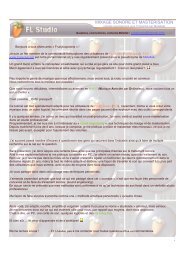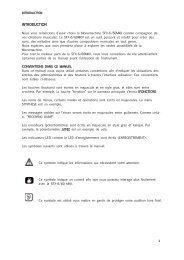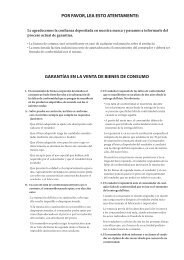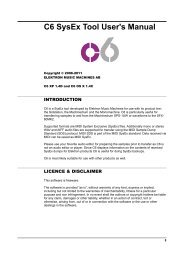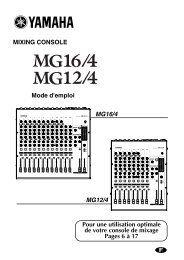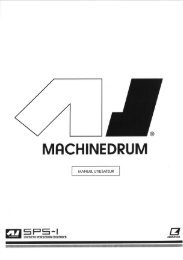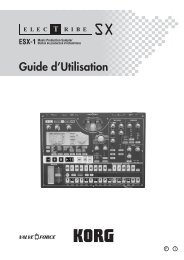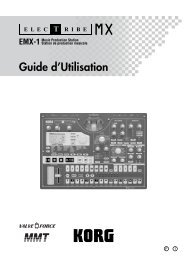Access Virus User Manual - SoundProgramming.Net
Access Virus User Manual - SoundProgramming.Net
Access Virus User Manual - SoundProgramming.Net
Create successful ePaper yourself
Turn your PDF publications into a flip-book with our unique Google optimized e-Paper software.
12 CHAPTER 3<br />
Prologue<br />
With the benefit of two external<br />
audio inputs, the <strong>Virus</strong> may also<br />
serve as an FX device and signal<br />
processor that you can use creatively<br />
to come up with all kinds of<br />
effects. External signals can be<br />
processed with filter, gate and lo-fi<br />
effects, routed to the <strong>Virus</strong> effects<br />
section and serve as a modulation<br />
source for frequency and ring modulation.<br />
Beyond that, you can use internal<br />
or external signals as sources for<br />
the <strong>Virus</strong>’ on-board vocoder serve.<br />
The vocoder works with up to 32<br />
filter bands and offers diverse<br />
manipulation and modulation<br />
options.<br />
The three main oscillators produce<br />
66 waveshapes, three of which are<br />
dynamically mixable so that spectral<br />
effects are possible within the<br />
confines of a single oscillator. In<br />
conventional synthesizers, this<br />
type of effect requires several oscillators.<br />
Synchronization, frequency<br />
modulation and ring modulation<br />
between the audio oscillators<br />
delivers additional complex spectral<br />
effects that you can use for all<br />
kinds of sound shaping purposes.<br />
The filters can be switched in<br />
series or in parallel within the<br />
voices via several options. When<br />
you switch the filters in series, the<br />
saturation stage is embedded<br />
between the filters. Consequently,<br />
an overdriven filter resonance can<br />
be re-filtered within the same<br />
voice! A maximum of six filter<br />
poles (36 dB slope!) enables radical<br />
tonal manipulations.<br />
The LFOs feature 68 continuous<br />
variable waveshapes each, including<br />
a triangle with variable symmetry<br />
and infinitely variable<br />
aperiodic oscillations for random<br />
variation of the controlled parameters.<br />
The LFOs are capable of polyphonic<br />
as well as monophonic<br />
oscillation. In other words, if several<br />
voices are active, the LFOs can<br />
run independently or in sync. A<br />
number of keyboard trigger<br />
options enable you start LFO waveshapes<br />
with variable phase lengths<br />
at the beginning of a note and/or<br />
to cycle once only, like an envelope.<br />
Next to the numerous ”hardwired”<br />
or fixed modulation configurations,<br />
you can assign three<br />
modulation sources to up to six<br />
different modulation destinations



